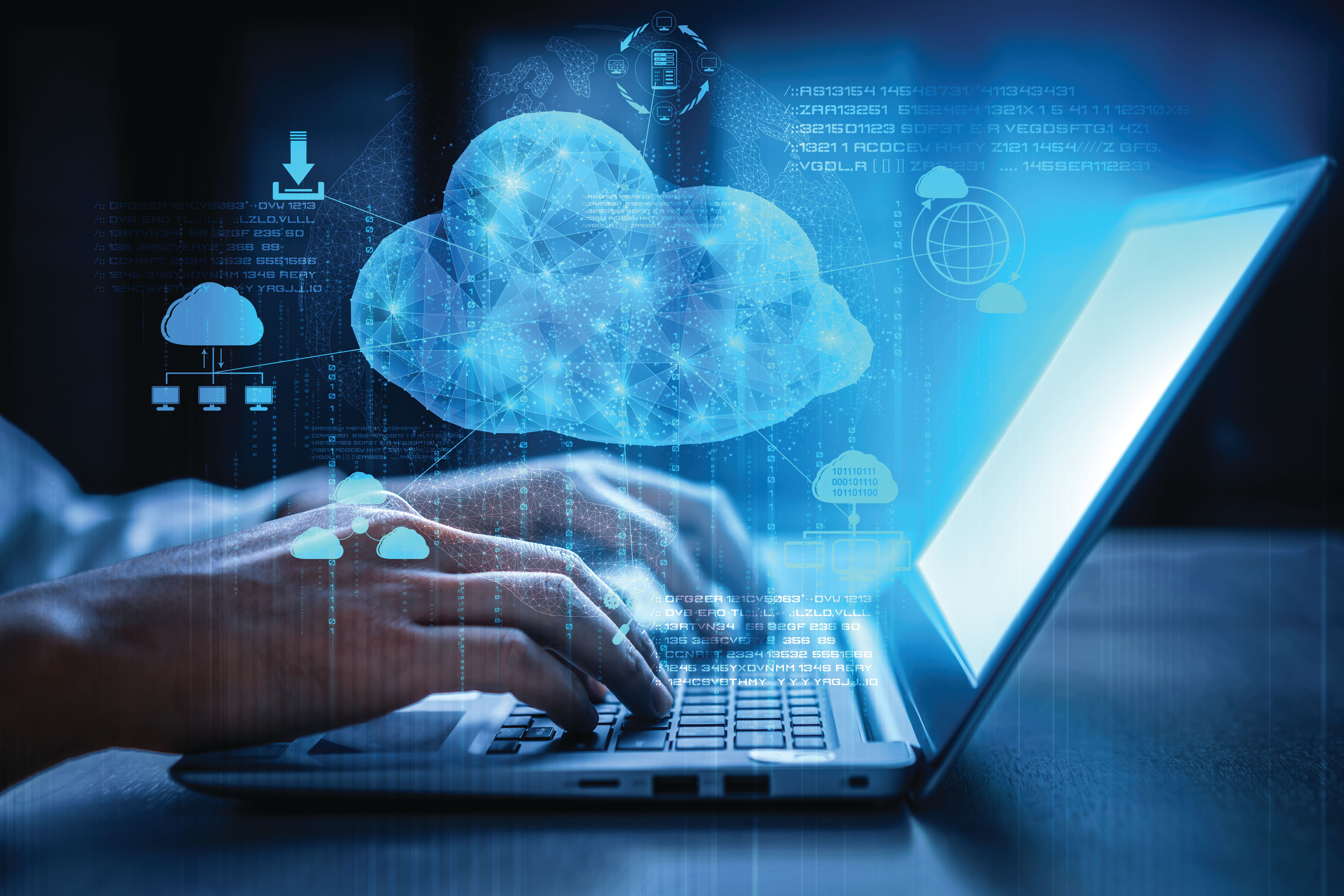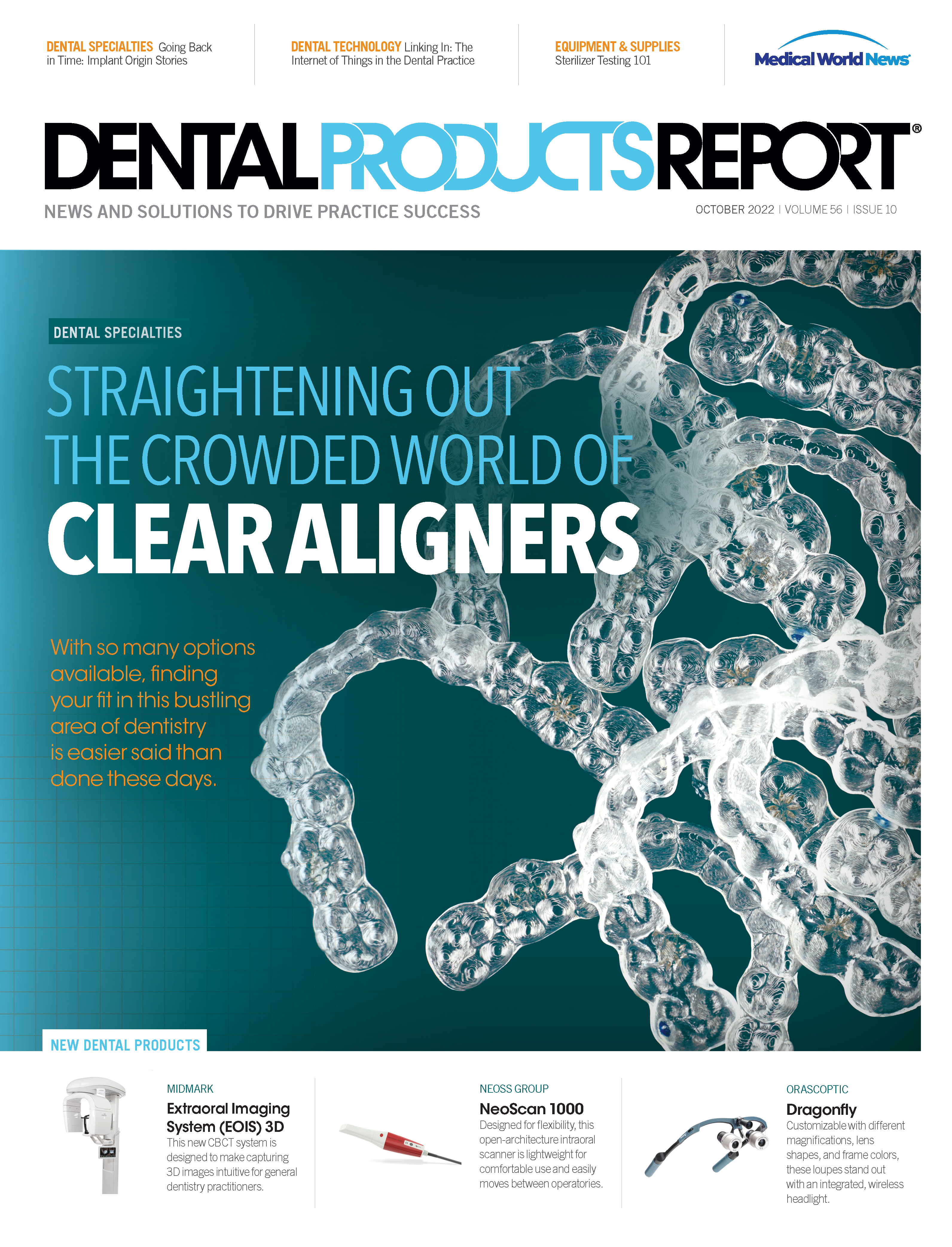The Cloud, IoT, and Me...Who’s Watching the Store?
Cloud-based software is the way of the future for dental practices, but what implications does that have on the evolution of technology in the industry?

I’ve been doing this technology thing for quite a while now. I consider myself lucky to have been practicing when computers got a toehold into the industry. I managed to catch the wave just as it started to swell, and I have been riding that wave ever since. One of the better things my history in technology has given me is perspective. When I started with tech, older colleagues teased me about how I’d survive “when the computer quits working.” I would just smile and say, “There are ways around that,” and leave it at that.
In the Beginning
The early days of the tech influx saw new, amazing high-tech devices come to dentistry, even before the computer became commonplace. The original intraoral cameras were on carts that were wheeled in when needed and connected to big electronic boxes that converted the camera signal into something readable, then that box was connected to a big monitor to display the image.
There was no way to save the images. You just showed the picture to the patient, then went on about treatment. You could print them if you desired, but that required expensive photo paper, and you had to then put the photos into a paper chart. It wasn’t worth the hassle.
Early digital radiography was a tad more sophisticated. It still required a cart, but at least it used a laptop. You could store the images in a digital patient file for later retrieval, but the process and the sensors were bulky. Plus, when you wanted to see the radiographs, you had to get the laptop and then open the files.
Suddenly the computer became the hub of the tech wheel, whereas the intraoral camera and the digital x-ray sensor became the spokes. The operatory computer was where everything connected. Suddenly and efficiency surged when we didn’t have all these separate pieces that we brought in to use.
A History Lesson: Cloudy With a Chance of Electrons
In 1982, a young and bright 28-year-old, Scott McNealy, helped found a company called Sun Microsystems. His statement in 1982 was: “The Network is the Computer.” We are now seeing this statement proven out time and time again.
The reason I bring this up is because, when translated to today’s environment, what he really meant was: “The Cloud is the Computer.” As a profession, we are already turning a large amount of our practice data over to the cloud, and that is only going to increase. Thanks to a near ubiquitous penetration of broadband internet, we are moving data around the planet like Marilyn Monroe’s skirt over a subway grate.
The computer in the operatory is not going away anytime soon, but it will function more and more as a gateway for the operatory to access information that all our connected devices will store.
The next big jump we will see is cloud storage of imaging, including our cone beam computed tomography data. Companies are putting the finishing touches on a single access point for extraoral photos, intraoral photos, intraoral radiographs, and cone beam.
The Good News: We’re All Connected
Now let’s think about the Internet of Things (IoT) for a bit. Think of things like Ring doorbells, Nest thermostats, garage door openers, and, of course, the Amazon Echo that brings Alexa into your life. All the types of things that are connected and make your life easier without being connected to your computer. In most instances, the first time you plug them in, they ask you for your Wi-Fi username and password, and that’s it. They will automatically connect to your network, then they sit there in the background.
The biggest reason we haven’t seen tons of IoT in our offices yet is that we don’t often have to change our equipment. Sure, you might have an IoT thermostat currently, but that is a low-dollar item. I am talking about chairs, dental units, autoclaves, and the expensive things we use every day. We don’t often replace them, but as we do, you’ll see many devices that want to connect.
One of the first devices I saw with this ability is my SciCan STATIM 2000 G4 cassette autoclave. I purchased the device a couple years ago and was able to connect it to my network. It sends emails to me about every cycle it runs and warns me and my equipment support team at Goetze Dental if there is a problem.
Then there is Planmeca’s Romexis system. This software connects every piece of Planmeca equipment in the office and does cloud image storage that I mentioned above—all in 1 system.
Imagine devices that notify service when they break down or, better yet, before they break down. It costs a lot of money to equip a service van from your equipment repair team. I’ve been told each van can cost a company well over $100,000 because they are full of the most needed parts, but they don’t carry every part. Often, a tech comes to the office, diagnoses the problem, then needs to go pick up the necessary part (or, heaven forbid, needs to order it). Until the repair is completed, an office is not functioning at peak efficiency. IoT technology will allow a device to contact service and say, “I need part XYZ or I will not work in X number of hours” or “I need part XYZ, and I am broken and not functioning.” Either scenario allows your service team to bring the necessary part on the first trip and minimize your downtime. Doesn’t that sound amazing? It is!
The Bad News: We’re All Connected
Being so dependent on things outside our control is scary for a lot of us. Dentists are almost all strictly type A personalities, and we love control. Some of the things we are going to deal with are going to be difficult for some of us, whereas some of these have things that need to be worked out.
Ransomware is a huge problem, and I don’t have the solution. The criminals that run those groups are well aware of what targets can be hit to maximize the chances that a target will pay. I often wonder what would happen if one of these groups knocked a digital impression system offline. Sure, we could all start using impression material, but that would create major problems for the industry. What if someone took a cloud imaging platform down? What if there were no radiographs for a certain percentage of dental offices? That would be a disaster for the industry.
In the past year or two, we have seen a lot of healthcare systems get hit with this problem. The crooks know hospitals need to run, which puts a tremendous amount of pressure on hospitals to pay to get access to their data. We’ve also seen a few dental systems get hit with this. One of the largest was when ransomware compromised a dental information technology company, then used that company’s access to their clients to freeze the clients.
Dental companies that are providing things like practice management and image storage need to put security at a premium. Every company I’ve spoken with has assured me they are locking things as tightly as they can, but there is always room for improvement. There are HIPAA requirements, but it’s also just the right thing to do both ethically and for the good of our businesses. Ransomware had been around for a very long time, and it’s not going away anytime soon.
There is also the problem of the connection itself. If your business is going to rely on offsite services, will you be able to go offsite? We recently lost our internet connection for 2 hours and our VoIP phones went down.
My office is still running a server, so our data were accessible, and our VoIP provider was able to quickly route our phone lines over to our cell phones, so the problem was minimized. I was lucky. If I was running cloud-based practice management or image management, we’d have been in a much deeper hole. Even with digital impressions, our scanners just queued up the scans, then sent them out when the connection came back, but it could have been a lot worse. Even though the internet in my office is not mission-critical to every operation, it soon will be, which means we must have connections and vendors we can rely on.
We are all becoming so dependent on our digital tools that in the very near future, losing 1 (or the connection to them all) will mean everything will come to a screeching halt. This also means these services and the internet connection that powers them must be as reliable as our other utilities like electricity. Things are incredibly more stable and reliable than in the past, but they need to be even more so.
Wrapping Up
As anyone who knows me will tell you, I’m bullish on technology. The problems I’ve discussed here aren’t problems we all deal with every day, but that doesn’t mean we can ignore them. In the past year or two, we have seen what can happen when a

Product Bites – January 19, 2024
January 19th 2024Product Bites makes sure you don't miss the next innovation for your practice. This week's Product Bites podcast features new launches from Adravision, Formlabs, Owandy Radiology, Henry Schein Orthodontics, Dental Creations, and Dental Blue Box. [5 Minutes]
Product Bites – December 22, 2023
December 22nd 2023The weekly new products podcast from Dental Products Report is back. With a quick look at all of the newest dental product launches, Product Bites makes sure you don't miss the next innovation for your practice. This week's Product Bites podcast features updated software from Medit. [2 Minutes]